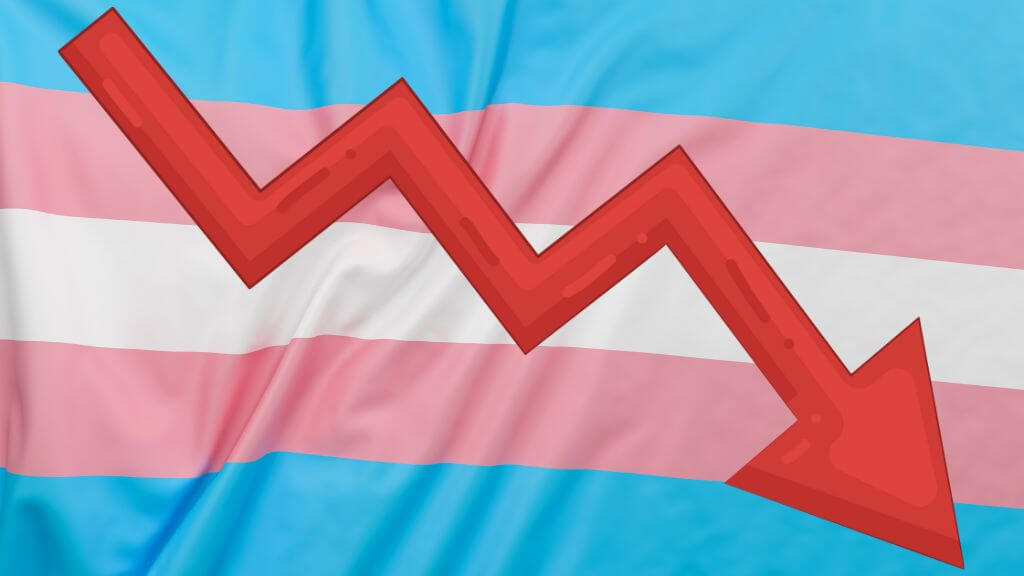The gender affirming care experiment on children in Finland is being unwound as scientific and medical evidence show that it is ineffective, dangerous, and not what was originally intended.
A key voice calling for the change, and a return to sensible, responsible medicine is Professor Riittakerttu. She was recently interviewed by The Australian as part of her speaking involvement at a symposium in Adelaide.
Professor Kaltiala is a psychiatrist in Finland and someone who supported the early expansion and development of ‘gender affirming care’ but is now calling for it to be reversed and limited. She is very well qualified, being the chief psychiatrist at Tampere University Hospital (specialising in adolescence) and also working academically as a professor of adolescent psychiatry at Finland’s Tampere University.
She stresses that a key part of medicine is to help patients and not to provide interventions that are ineffective or harmful. This actually reflects the first two ethical principles of medicine – firstly, to do no harm (also referred to as non-maleficence) and secondly, beneficence, that is, only do those things which help a person.
For Professor Kaltiala, the approach to gender dysphoria in many Western countries (including New Zealand), has gone wildly awry – with treatments being offered that offend both medical ethical principles by actually causing the patient harm or at the very least, doing no good.
One of her key observations through clinical practice and observation was the difference between the reasons activists argued gender affirming care was required and for whom, and who was actually presenting for assistance and why.
For Finland, back in 2010/2011, activists argued that young people needed to be put onto puberty blockers as early as possible so as to prevent them the stress of puberty, and the usual physical changes which they do not feel fits their identity. This is often referred to as Dutch Model of care – stressing the earlier the interventions, the better. Activists also stressed that most seeking help would be boys or young men; they would be mentally stable (or with very minor mental health issues); and that overall numbers seeking treatment would be low.
However, what Professor Kaltiala and others in Finland noted was that most patients were young women; were usually post-puberty; and with a complex array of mental health issues.
She stresses that many of the young women coming in for assistance had a long history of psychiatric needs, and that these pre-dated any feeling of gender dysphoria. This echoes what we at Family First know, which is that gender dysphoria is a symptom of other complicated mental health issues.
In Finland today, much more emphasis and effort is placed on assessing the mental health needs of young people who present request gender affirming care. In most cases, Professor Kaltiala noted that treating these underlying issues removed the need for any ‘gender identity’ treatments. Put simply, gender dysphoria exists because of other underlying issues and that once treated, gender identity – or the belief that a young person is in the wrong body – goes away. Importantly, gender dysphoric feelings go away without requiring the prescribing of toxic drugs or surgeries which mutilate perfectly healthy bodies.
This position is reinforced by a research project, also from Finland, which noted that suicide rates for those with gender dysphoria was more often related to other serious psychological problems. As Professor Michael Biggs, a sociologist at Oxford University, commented in relation to the findings:
“Although the rate of suicide [in the Finnish study] is just over four times higher among trans young people than their peers, this is explained by their more serious psychiatric problems. When these psychiatric problems are taken into account, there is no evidence that transgender people have a higher rate of suicide.”
These are important findings to counter the narratives that trans activists often use, suggesting that puberty blockers and surgery are required to stop gender confused youths from suiciding at higher rates than others. What is clear from the research is that gender dysphoria is downstream of other mental health issues and that when those underlying conditions are considered, suicide can be properly addressed.
The research also makes it clear that various gender reassignment interventions have little impact on suicide rates, because what is driving suicidal behaviour are issues other than gender confusion. While all suicides are a tragedy, the research indicates that deaths of transgender youth – when the underlying other psychiatric issues are accounted for – is both low and similar to non-trans youth also experiencing those mental health issues.
A final observation from Professor Kaltiala’s comments in The Australian newspaper, was that Finland, up until 2011, only allowed gender reassignment surgery and the administration of the likes of cross sex hormones to adults. It was not available to young people or children. Yet, as is so often the case with progressive causes, it did not take long for activists to decry this limit as discrimination – calling for children and young people to be able to access the service.
Here at Family First, we applaud the openness and honesty of discussions in Finland. Even though Professor Kaltiala note’s such medical and scientific based discussion remains difficult as activists decry any push back as ‘transphobic’, it is clear they are much more open that here in New Zealand – and it is the young people of Finland who are benefiting.
*Written by Family First staff writers




